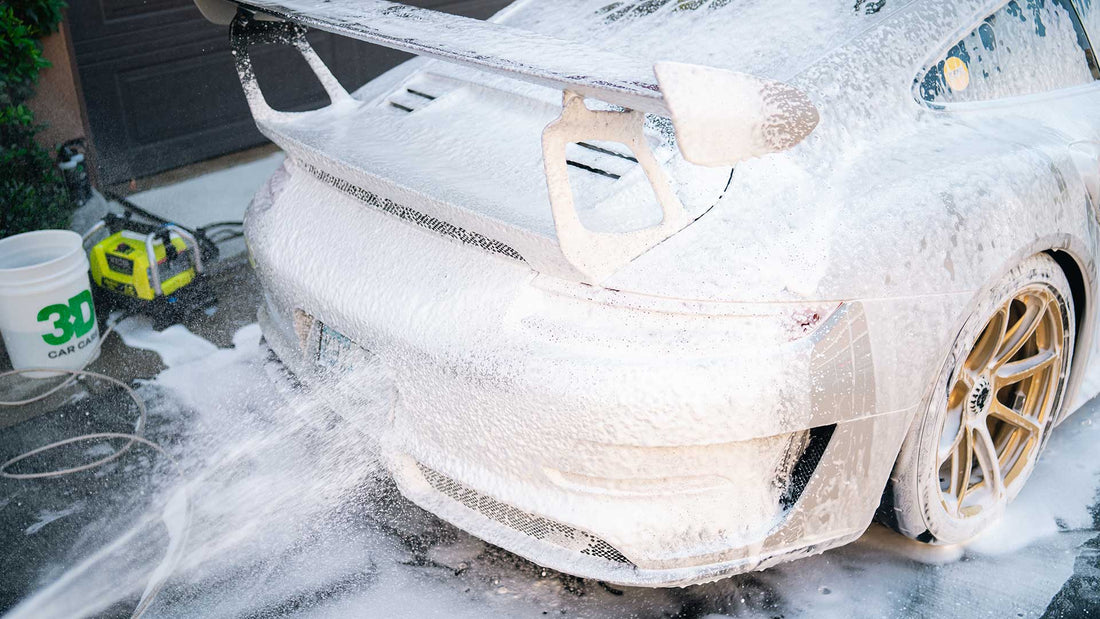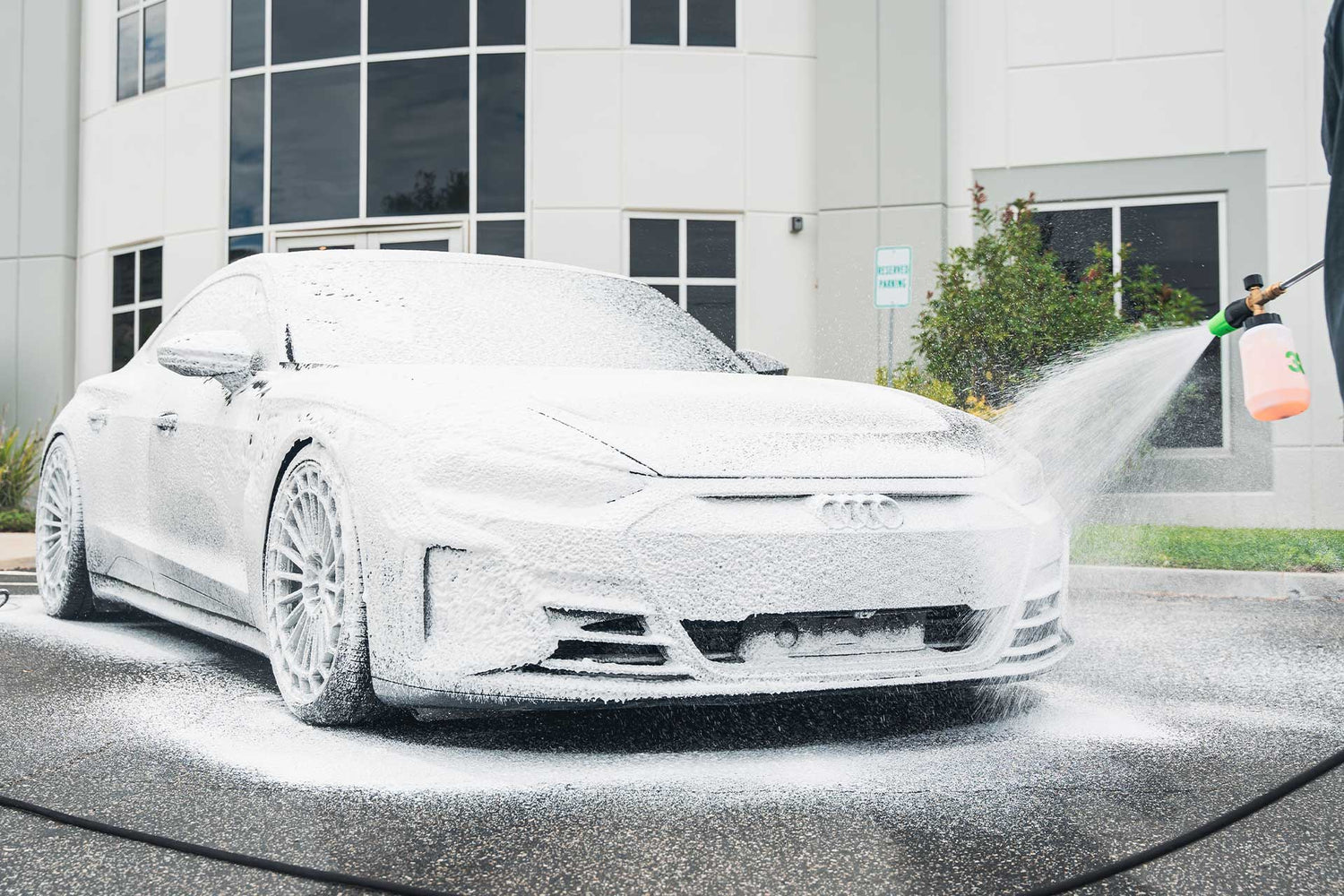
6 Detailing Mistakes Even Pro's Still Make
Share
Detailing your vehicle is not just about making it look good; it's also crucial for maintaining its condition and value. Whether you're a seasoned professional or a DIY enthusiast, understanding the common detailing mistakes can help you avoid costly errors and achieve optimal results. In this article, we'll explore six of the most common detailing mistakes that both beginners and experienced detailers should be aware of. By mastering the art of proper detailing, you can keep your vehicle looking pristine and protect its long-term health. Let's dive in and uncover the secrets to successful vehicle maintenance through effective detailing practices.
Mistake #1: Surface Preparation
Surface preparation is a critical step in the detailing process that often gets overlooked. It involves cleaning and preparing the vehicle's surface to ensure optimal adhesion and bonding of subsequent products, such as sealants, waxes, and ceramic coatings. Neglecting surface preparation can lead to a variety of issues, including poor adhesion, inconsistent finishes, and reduced product performance.
For effective surface preparation, we recommend the following products from our product line:
- 3D GLW Series Iron Remover: This powerful formula effectively removes iron contaminants, which can interfere with the adhesion of subsequent products.
- 3D GLW Series Clay Lubricant: This lubricant helps the clay bar glide smoothly over the surface, ensuring a thorough and gentle cleaning process.
- 3D Clay Pad or Clay Towel: Choose the appropriate clay bar tool for your vehicle's size and surface texture to achieve the best results.
Learn more about surface prep in our paint decontamination guide.
Mistake #2: Detailing Tools
Choosing the right detailing tools for the job is essential for achieving the best results. Using incorrect tools can lead to inefficient work, damage to the vehicle's surface, and subpar finishes. For example, using buffing or polishing pads with the wrong texture for a specific task can lead to uneven results, damage to the paint or clear coat, and even scratches on the surface. By choosing the correct detailing tools for the job, you can ensure efficient work, protect the vehicle's surface, and achieve the desired results in your detailing process.
Mistake #3: Products
Choosing the right products for each detailing task is crucial to achieving professional results and protecting your vehicle's surfaces. Using the wrong products can lead to damage, ineffective cleaning, and unsatisfactory finishes.
- Paint: Choose detailing products specifically formulated for automotive paint to ensure gentle yet effective cleaning without causing damage or swirl marks. Look for pH-balanced car wash soap, quality waxes, and sealants designed to protect and enhance your paint finish.
- Glass: Opt for glass cleaners that are ammonia-free to avoid damaging tinted windows or anti-glare coatings. Specialized glass cleaning products ensure streak-free clarity without harming sensitive glass surfaces.
- Interior: When cleaning interior surfaces like leather, plastic, or fabric upholstery, use dedicated cleaners suitable for each material type. Avoid harsh chemicals that can degrade or discolor interior components.
Mistake #4: Product Application
When it comes to detailing your vehicle, applying products correctly is key to achieving that professional finish and protecting your car's surfaces. Improper product application can lead to wasted product, ineffective results, and even damage to your vehicle. Here are some common mistakes to avoid:
- Overuse: Using too much product can leave residues, attract dirt, and lead to streaks or uneven finishes on your vehicle's surfaces.
- Uneven Application: Applying products unevenly can result in inconsistent results, leaving some areas under-protected or over-treated compared to others.
- Incorrect Tools: Using the wrong applicators or tools for product application can lead to ineffective coverage or potential damage to surfaces.
Always remember to follow the directions on product labels to avoid using too much or too little.
Mistake #5: Car Washing Technique
When it comes to washing your car, using the right techniques is essential to maintain its appearance and prevent damage. Improper washing methods can lead to paint swirls, scratches, and holograms, diminishing the overall look of your vehicle. Here are some risk associated with improper washing methods:
- Paint Swirls: Circular marks on the paint caused by improper washing techniques like using dirty sponges or applying too much pressure.
- Scratches: Deep marks on the paint surface resulting from abrasive materials or incorrect washing motions.
- Holograms: Visible patterns or lines on the paint caused by improper polishing or waxing techniques.
Proper Car Washing Techniques
- Start with Wheels and Tires
- Use Two-Bucket Method
- Use Grit Guards
- Work from Top to Bottom
- Use Microfiber Wash Mitts
Mistake #6: Car Washing Technique
When it comes to caring for your vehicle's paint, skipping paint protection can lead to a host of issues that can affect both the appearance and longevity of your car's finish. Neglecting paint protection exposes your vehicle to risks like oxidation, UV damage, and paint deterioration, which can impact its resale value and overall aesthetic appeal. Effective paint protection techniques include:
- Waxes: Traditional car waxes provide a protective layer that shields the paint from contaminants and UV rays. Regular waxing can enhance shine and offer basic protection.
- Sealants: Sealants offer longer-lasting protection compared to waxes, forming a durable barrier against environmental hazards and providing enhanced gloss.
- Ceramic Coatings: Ceramic coatings are the pinnacle of paint protection, offering superior durability, scratch resistance, UV protection, and hydrophobic properties that repel dirt and water effectively.
By implementing these paint protection options into your detailing routine, you can safeguard your vehicle's paint from damage, maintain its shine, and preserve its value over time. Remember, investing in proper paint protection is not just about aesthetics but also about ensuring the long-term health of your car's exterior.
Wrapping Up
Proper detailing practices are the cornerstone of maintaining your vehicle's appearance, protecting its surfaces, and ensuring long-term value. By avoiding common mistakes like improper surface preparation, using incorrect tools or products, and neglecting paint protection, both professionals and DIY detailers can achieve optimal results that showcase their dedication to car care.
By incorporating these products into your detailing routine, you can achieve professional-level results and keep your vehicle looking its best. Remember, attention to detail and the right tools can make all the difference in preserving your car's beauty and ensuring a lasting shine. Trust in 3D Car Care for a superior car care experience that exceeds expectations.

